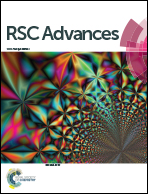Antifouling activities of pristine and nanocomposite chitosan/TiO2/Ag films against freshwater algae
Abstract
Adhesion of microalgae or biofouling on submerged artificial surfaces is a universal problem in freshwater environments. Herein, we developed Ag and TiO2 nanoparticle (NP)-incorporated nanocomposite and pristine films using chitosan for antifouling applications in freshwater environments. Both TiO2 and Ag NPs are known for their algaecide activity. Hence, nanocomposite (Ag/TiO2 and TiO2/Ag) and pristine (Ag, TiO2) films containing a range of concentrations of both particles were tested against two freshwater algae, specifically, Scenedesmus sp. and Chlorella sp. under different photo conditions. The toxicity assays show that Scenedesmus sp. is more sensitive to all the films tested than Chlorella sp. under both UV-C exposure and dark conditions. The slime formation, biomass (%), LPO, and uptake of the NPs are correlated well with their toxicity data. EPS release is noted to be higher for Scenedesmus sp. than Chlorella sp. due to the higher toxicity of this algal species. This indicates that the species variation substantially influences the antifouling action of both the pristine and nanocomposite films.



 Please wait while we load your content...
Please wait while we load your content...